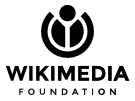
Error
Too Many Requests
If you report this error to the Wikimedia System Administrators, please include the details below.
Request served via cp3070 cp3070, Varnish XID 837685373
Upstream caches: cp3070 int
Error: 429, Too Many Requests at Sun, 27 Apr 2025 15:38:53 GMTSensitive client information
IP address: 151.236.25.37